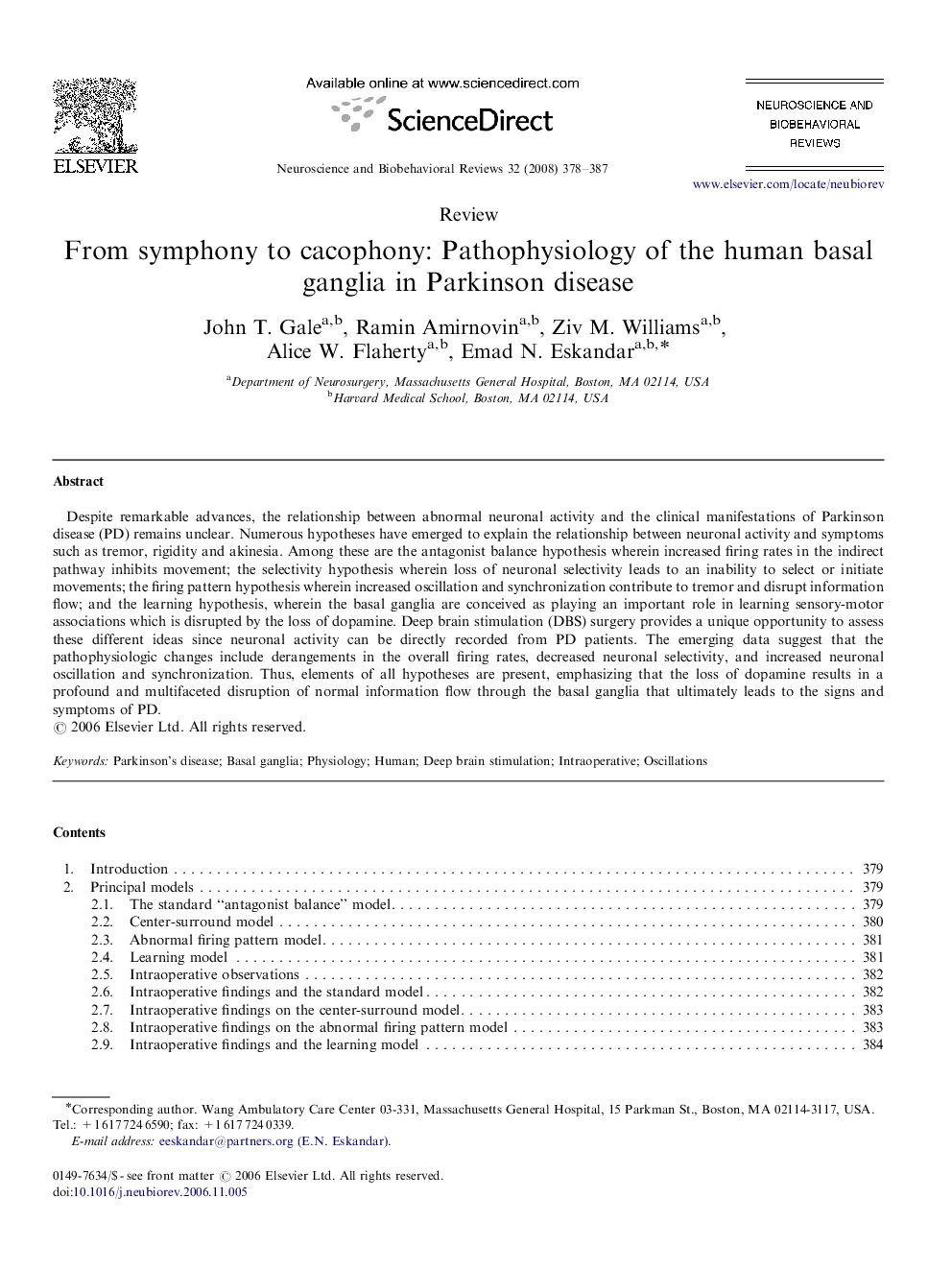| Article ID | Journal | Published Year | Pages | File Type |
|---|---|---|---|---|
| 938041 | Neuroscience & Biobehavioral Reviews | 2008 | 10 Pages |
Despite remarkable advances, the relationship between abnormal neuronal activity and the clinical manifestations of Parkinson disease (PD) remains unclear. Numerous hypotheses have emerged to explain the relationship between neuronal activity and symptoms such as tremor, rigidity and akinesia. Among these are the antagonist balance hypothesis wherein increased firing rates in the indirect pathway inhibits movement; the selectivity hypothesis wherein loss of neuronal selectivity leads to an inability to select or initiate movements; the firing pattern hypothesis wherein increased oscillation and synchronization contribute to tremor and disrupt information flow; and the learning hypothesis, wherein the basal ganglia are conceived as playing an important role in learning sensory-motor associations which is disrupted by the loss of dopamine. Deep brain stimulation (DBS) surgery provides a unique opportunity to assess these different ideas since neuronal activity can be directly recorded from PD patients. The emerging data suggest that the pathophysiologic changes include derangements in the overall firing rates, decreased neuronal selectivity, and increased neuronal oscillation and synchronization. Thus, elements of all hypotheses are present, emphasizing that the loss of dopamine results in a profound and multifaceted disruption of normal information flow through the basal ganglia that ultimately leads to the signs and symptoms of PD.
